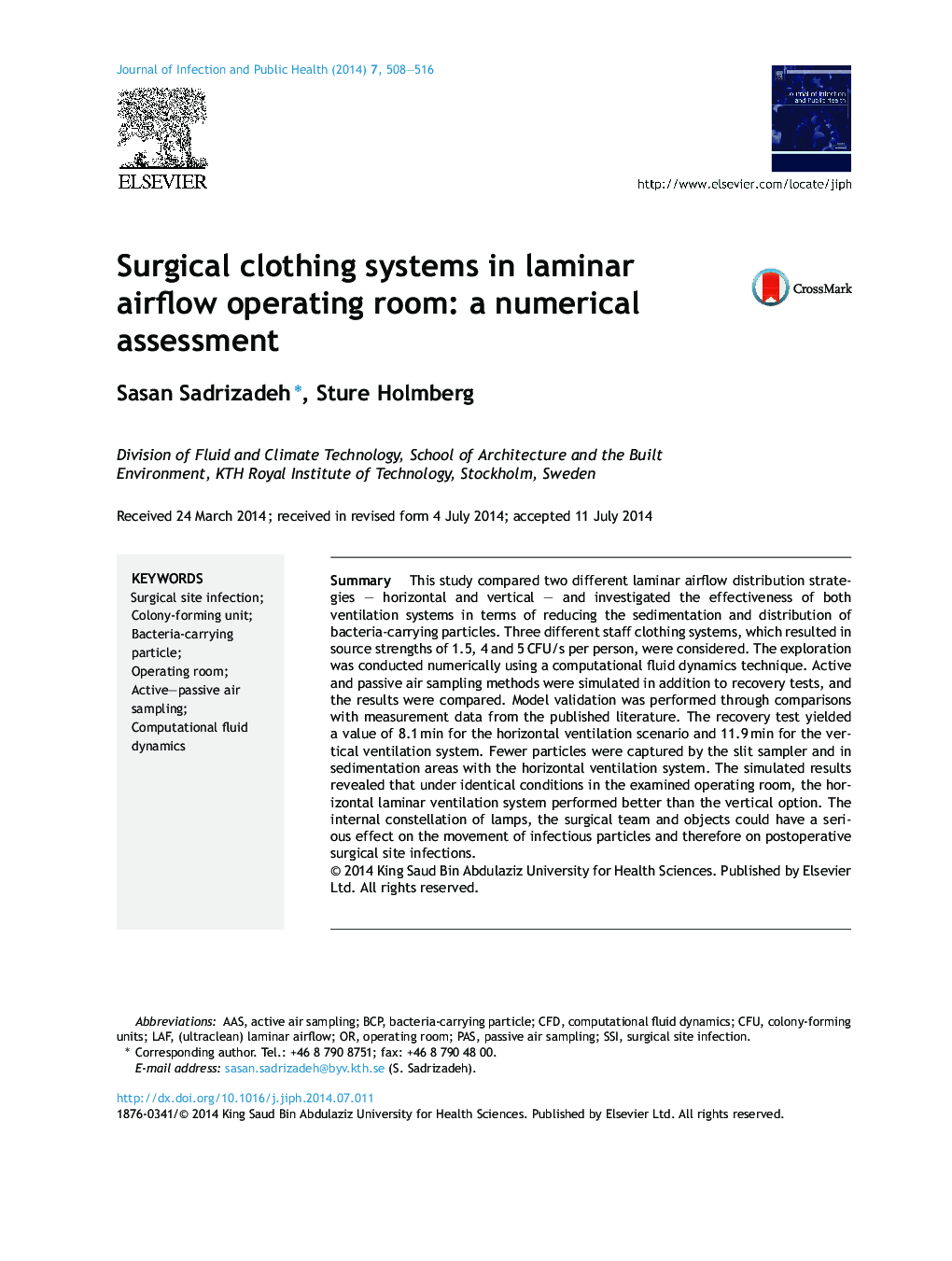| Article ID | Journal | Published Year | Pages | File Type |
|---|---|---|---|---|
| 3406146 | Journal of Infection and Public Health | 2014 | 9 Pages |
SummaryThis study compared two different laminar airflow distribution strategies – horizontal and vertical – and investigated the effectiveness of both ventilation systems in terms of reducing the sedimentation and distribution of bacteria-carrying particles. Three different staff clothing systems, which resulted in source strengths of 1.5, 4 and 5 CFU/s per person, were considered. The exploration was conducted numerically using a computational fluid dynamics technique. Active and passive air sampling methods were simulated in addition to recovery tests, and the results were compared. Model validation was performed through comparisons with measurement data from the published literature. The recovery test yielded a value of 8.1 min for the horizontal ventilation scenario and 11.9 min for the vertical ventilation system. Fewer particles were captured by the slit sampler and in sedimentation areas with the horizontal ventilation system. The simulated results revealed that under identical conditions in the examined operating room, the horizontal laminar ventilation system performed better than the vertical option. The internal constellation of lamps, the surgical team and objects could have a serious effect on the movement of infectious particles and therefore on postoperative surgical site infections.
